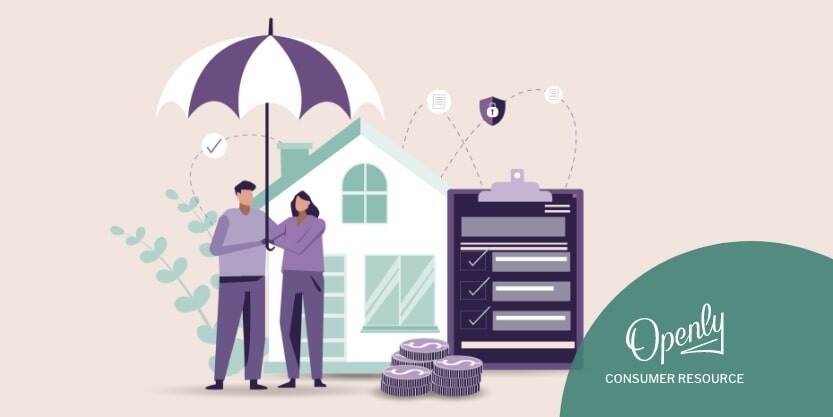Today’s insurance market is a dynamic one, fueled by market fluctuations, technological advancements, and shifting consumer demands. As a result, homeowners may find themselves seeking more comprehensive coverage, lower insurance premiums, or better customer service from their home insurance provider.
Regardless of your motivation, if you're considering making a switch, understanding the process can help ensure a smooth transition—without compromising your coverage or your budget. In this guide, we'll walk you through the steps of switching your home insurance provider and provide tips for a smooth transition.
At a glance:
- Switching home insurance can save money and improve coverage, but thoroughly assess your current policy's strengths and weaknesses first.
- Focus on finding a new provider with a balance of competitive rates, desired coverage options, and a strong customer service reputation.
- Beyond price, prioritize a new provider with a streamlined claims process and a history of resolving issues efficiently for a smoother customer experience.
Assessing your current home insurance
Unhappy with your home insurance company? Before jumping ship, take stock of your current policy. Consider three key areas: coverage, premium, and customer service. This self-assessment will guide you toward finding a better fit.
Coverage Limits
By reviewing your existing home insurance policy, you’ll have a better understanding of the extent of your coverage, including dwelling coverage, personal property coverage, liability coverage, and any additional coverage options you may have.
Insurance Premiums
Assessing how much you’re paying in insurance premiums can help you determine whether or not your current payments fit into your budget, or if you will need to recalculate based on your financial goals.
It’s important to note that there are variations in insurance premiums across insurance carriers. Shopping purely based on price is not recommended, as in many cases, coverage can dictate premium cost.
For more information on insurance premiums, check out our article “Why is My Homeowners Insurance So High?”
Customer service
The customer experience is increasingly influential to consumers looking for the optimal experience. Evaluate any interactions you’ve had with your current insurance provider’s customer service, including claims experiences, to help determine your overall customer satisfaction.
Why switch your home insurance provider?
There are several reasons why you may want to switch your home insurance provider. Perhaps you’ve encountered dissatisfaction with your current provider’s customer service or claims process. Maybe your home’s value has increased, or your coverage needs have evolved. It’s also possible you’re seeking more comprehensive coverage options or simply aiming for more affordable premiums. Or, maybe you’ve relocated and need to change providers.
Whatever your reason may be, switching your home insurance provider can provide you with better coverage and potentially save you money in the long run.
When to switch your home insurance provider
The ideal time to initiate a switch in home insurance providers coincides with your current policy’s renewal date. By timing the transition efficiently, you can minimize disruption and ensure continuous coverage.
However, there may be circumstances where you find it necessary to switch providers before the policy renewal date. In such instances, you can still switch insurance providers, but you may have to pay fees as a consequence of terminating the contract prematurely.

How to switch your home insurance provider
Ready to make the switch from your current home insurance provider? Switching your home insurance provider involves a series of steps to terminate your current policy and initiate a new one. Here's what you need to know:
1. Research, research, research
Before making the switch, research is key. The perfect new provider should tick all your boxes: competitive rates, robust coverage options you actually need (not just bells and whistles), and a stellar reputation for customer service and claims handling. Here's how to find your match:
Map your needs
Start by creating a coverage wish list. What kind of dwelling and personal property coverage do you need? Are there any specific add-ons you require? Knowing your priorities will help you compare apples to apples later.
Compare insurance providers
Research different providers; and online resources or your insurance agent can be a goldmine of information. Review coverage options and don't forget to check out online reviews and financial stability ratings.
2. Get savvy with quotes
With your shortlist in hand, it's quote time. Your independent agent can help you get quotes from providers. Remember, accuracy is key here; communicate your needs thoroughly to your agent so that they can get you tailored quotes to fit your needs. The more detailed you are about your home and desired coverage, the more precise your quotes will be.
Once you have them all, compare the quotes closely. Don't just focus on pricing—look for the best balance of coverage options, premiums, and any additional perks like discounts or bundled policies that might sweeten the deal.
3. Say goodbye to your old home insurance provider…
You’ve found your perfect match, but not so fast! But before you hit cancel, there are a few loose ends to tie up with your current provider. You can typically do this by calling your provider or sending a written notice of cancellation, either directly or via your agent. Be sure to check if there are any cancellation fees or penalties involved before proceeding. Some companies may charge a fee for canceling your policy early.
4. …And hello to your new homeowners insurance policy
With your current policy canceled, it's time to finalize things with your new provider. Don't just skim through the paperwork; this is your new insurance policy, so take your time to thoroughly review it. Make sure everything aligns with what you discussed and that the insurance coverage details match your needs. Don't hesitate to ask any questions you might have before officially signing on the dotted line.
5. Keep your mortgage lender in the loop
If you have a mortgage on your home, your lender will likely require you to maintain home insurance. Be sure to notify them of your new policy and provide them with the necessary information. This usually involves providing them with the new policy declarations page and any necessary paperwork to update their records.
6. Cancel automatic payments
Did you have automatic payments set up for your old policy? Don’t forget to cancel them! This will prevent any surprise charges after you’ve switched insurance providers. It's a quick and easy step that could save you unnecessary hassle.
Pro tips for a smooth home insurance transition
Here are some tips to help make your transition to a new home insurance provider as smooth as possible:
Start early
Don’t wait until the last minute to switch insurance providers. Start researching new insurance providers before your current policy is up for renewal. This gives you plenty of time to compare options, gather quotes, and make a well-informed decision without being pressured with a looming deadline.
Be honest about your home
When getting quotes or purchasing a new policy, be upfront and honest about your home and any potential risks. This guarantees you get the coverage you need and avoids any issues with claims down the line.
Keep records
Keep a record of all communication with both your old and new home insurance providers. This includes emails, letters, and records of any phone calls. It helps you stay organized, track important information, and provide proof of any agreements or changes made.
Post transition check-list
Congratulations! You've successfully changed home insurance providers. Now, to guarantee a smooth ongoing experience, here's a quick checklist:
- Become a policy pro. Before you file that paperwork away, thoroughly review your new policy. Double-check all your information is correct and that the coverage details match what you signed up for. If you have any questions or concerns, don't hesitate to reach out to your insurance agent or insurance provider for clarification.
- Set up autopay (optional). For peace of mind, consider setting up automatic payments for your premiums. This avoids the risk of late fees and ensures you're always covered.
Following the steps outlined in this guide will help you confidently switch your home insurance provider and secure the insurance coverage that best fits your needs. Remember, staying informed and proactive is key to a seamless transition. Now relax, knowing your home is well-protected.
* We provide this information to help you understand insurance. Any coverage is subject to the terms of your policy. Please refer to your policy and declarations page for complete terms, conditions and coverage details.




